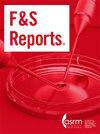Efficacy of human chorionic gonadotropin hormone in restoring spermatogenesis in men using non-prescribed androgens: a retrospective analysis of real-world data
IF 2.2
引用次数: 0
Abstract
Objective
To study the efficacy of human chorionic gonadotropin (hCG) in restoring spermatogenesis in men using non-prescribed androgens who are unwilling to discontinue their use.
Design
Retrospective analysis.
Patients
Nineteen men attending a harm reduction clinic in the Netherlands from April 2023 to July 2024, who had been using androgens for at least three months and were treated with hCG without ceasing androgen use.
Exposure
Continuous use of non-prescribed androgens and hCG therapy administered as part of a harm reduction strategy.
Main Outcome Measures
Change in total sperm count (TSC) and total motile sperm counts (TMSC) from baseline to after three to six months of hCG treatment.
Results
The mean TSC increased significantly from 18.0 million to 146.9 million after hCG treatment and TMSC increased from 1.1 million at baseline to 66.9 million post-treatment. The number of men with a normal TMSC increased from 5% to 58%. No statistically significant predictors of TSC change were identified through regression analysis.
Conclusion
Human chorionic gonadotropin appears to be effective in improving spermatogenesis in the majority of men who continue non-prescribed androgen use, whereas some men remain oligospermic or azoospermic. These findings support the cautious inclusion of hCG in harm reduction strategies, while emphasizing the need for further research and individualized counseling.
人绒毛膜促性腺激素在使用非处方雄激素的男性中恢复精子发生的功效:对真实世界数据的回顾性分析
目的探讨人绒毛膜促性腺激素(hCG)对使用非处方雄激素且不愿停止使用的男性恢复精子发生的作用。DesignRetrospective分析。患者:从2023年4月到2024年7月,19名男性在荷兰的一家危害减少诊所就诊,他们使用雄激素至少三个月,并在不停止使用雄激素的情况下接受hCG治疗。暴露持续使用非处方雄激素和hCG治疗作为减少危害策略的一部分。主要观察指标:总精子数(TSC)和总活动精子数(TMSC)从基线到hCG治疗3 - 6个月后的变化。结果hCG治疗后,平均TSC从1800万增加到1.469亿,TMSC从基线时的110万增加到治疗后的6690万。TMSC正常的男性数量从5%增加到58%。回归分析未发现有统计学意义的TSC变化预测因子。结论人绒毛膜促性腺激素对大多数继续使用非处方雄激素的男性的精子发生有效,而一些男性仍然是少精子或无精子。这些发现支持将绒毛膜促性腺激素谨慎纳入减少危害的策略,同时强调需要进一步研究和个性化咨询。
本文章由计算机程序翻译,如有差异,请以英文原文为准。
求助全文
约1分钟内获得全文
求助全文

 求助内容:
求助内容: 应助结果提醒方式:
应助结果提醒方式:


